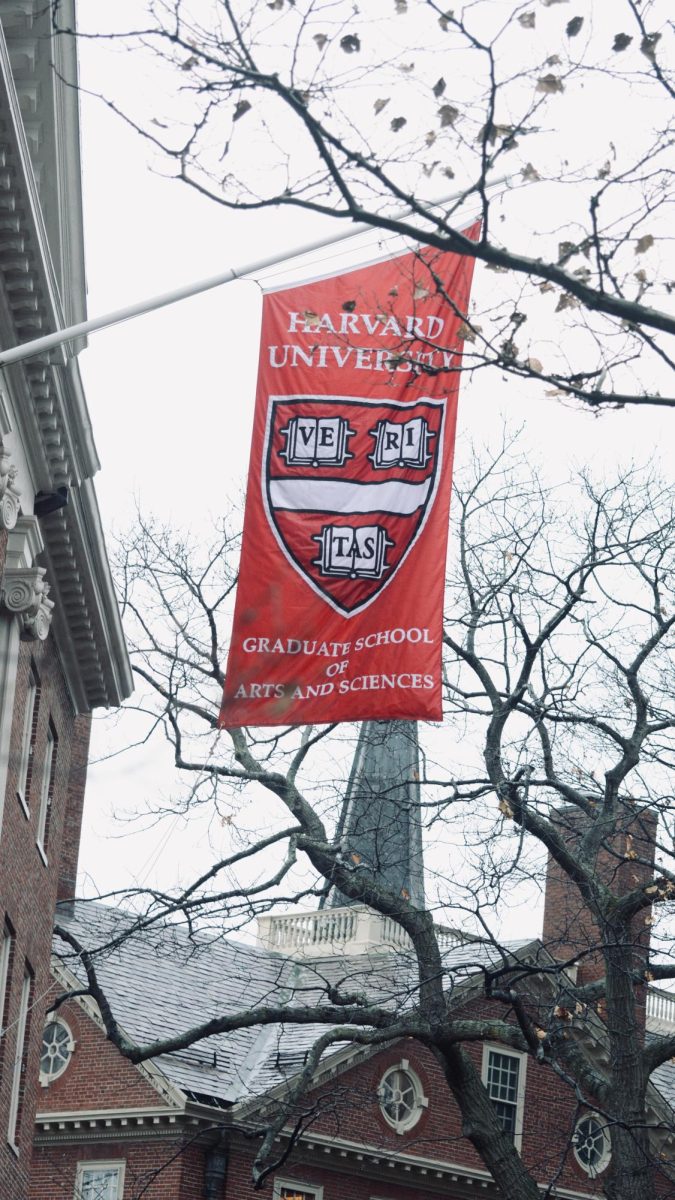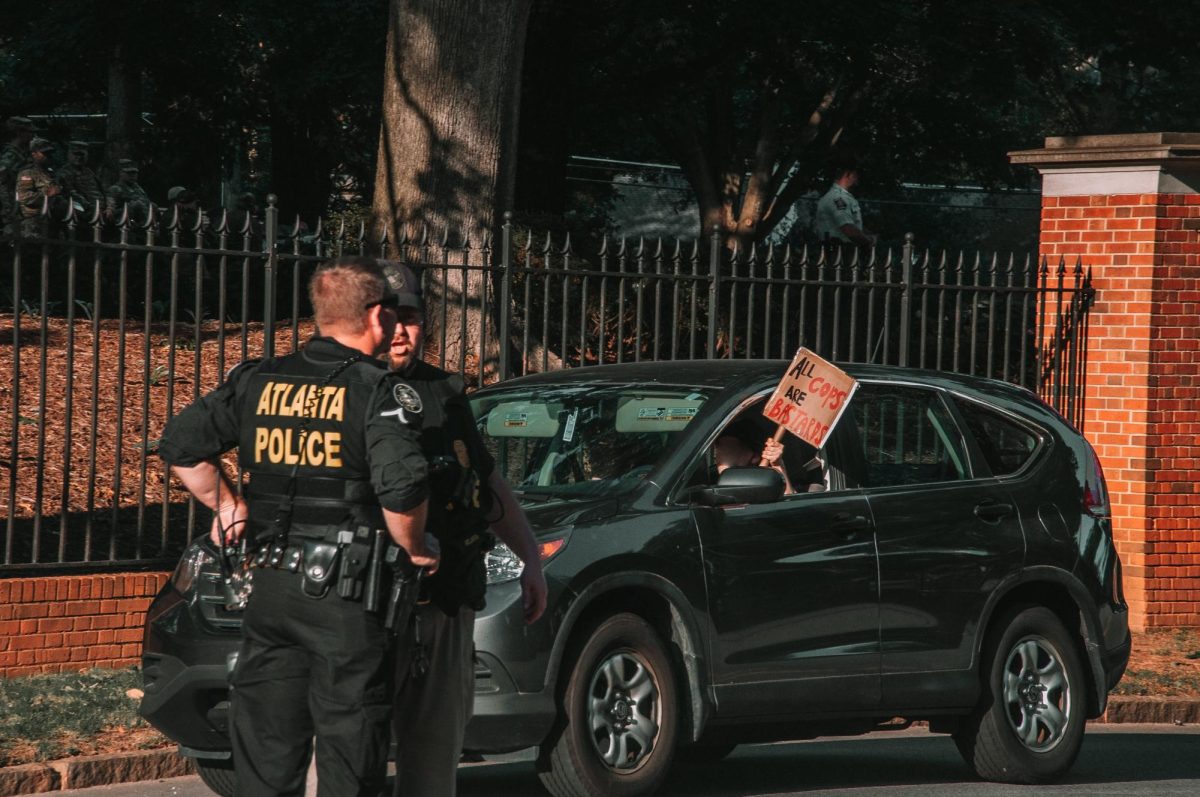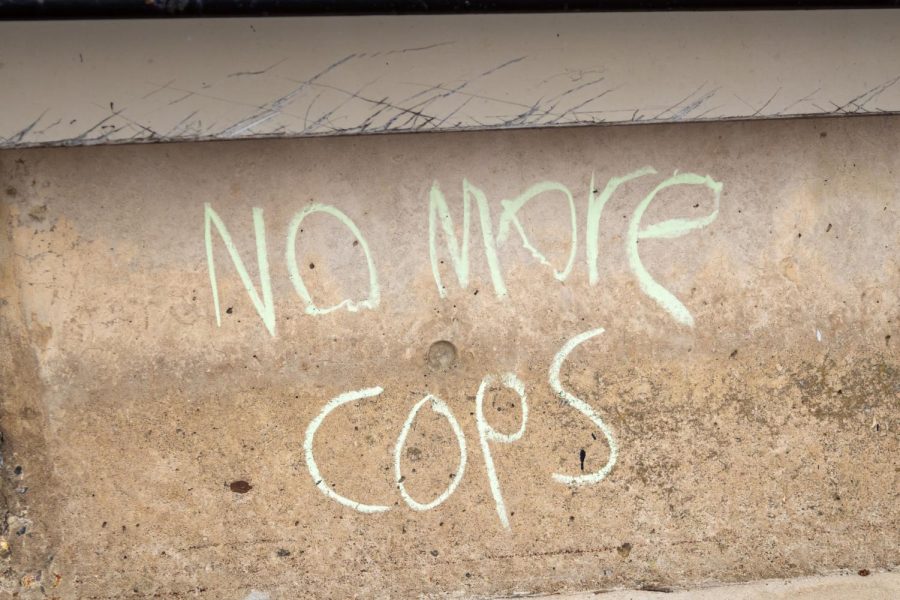
In a recent appearance on HBO’s “Real Time With Bill Maher,” writer Salman Rushdie responded to a question about his experience with students and “safe spaces.” He said that in his decades of teaching, he never encountered a student who asked for or seemed to need a safe space. During his appearance, Rushdie took a critical attitude toward the concept. The rest of the panel eventually chimed in, but Rushdie got the last word when he said, “College should be a safe space for thought, not from thought.”
Rushdie drove the point home. The problem is that regardless of its original intent, the implementation of safe spaces has created a sense of public paranoia within college campuses—spaces are deemed “safe” when there was never any evidence to the contrary.
It would be one thing if a space was clearly not “safe,” and if this prompted administrators to make changes and declare it as such. But to define a space as a “safe space” with no prior history of unsafe or discriminatory behavior taking place, is to operate from a standpoint that applies blame and guilt to a space which inhabits none.
As Adam Shapiro, a junior at Columbia University told Judith Shulevitz of the Times, “If the point of a safe space is therapy for people who feel victimized by traumatization, that sounds like a great mission.” He continues, “I don’t see how you can have a therapeutic space that’s also an intellectual space.” But the problem is that, in practice, safe spaces often do not confront trauma so much as they do emotions, opinions and viewpoints. In her op-ed, Shulevitz wrote “Safe spaces are an expression of the conviction, increasingly prevalent among college students, that their schools should keep them from being ‘bombarded’ by discomfiting or distressing viewpoints.”
We have reached a point where many students consider being uncomfortable a cause for concern. But being intellectually or emotionally uncomfortable is not akin to trauma, and while all cases are different, there are distinct differences between offense and discrimination.
Heightened levels of hypersensitivity to political viewpoints have led to the marginalization of students who hold views that are more controversial or uncommon than those held by the campus majority. There seems to be a lack of tolerance for these views, because some would consider them too offensive to be allowed into public discourse. This has allowed for the safe spaces “from” thought as Rushdie was pointing out, where people acting out of paranoia fear what might be instead of what currently is.
The same principle could also apply to the “Hate Has No Home at UMass” slogan recently rolled out by the University. The slogan was included in the University’s diversity campaign in response to the events in Charlottesville this past summer, and with it the university brought it speakers and otherwise expanded their diversity efforts. On one hand, the signature statement is true, and stopping the spread of hate and keeping it away from the public sphere is important. But when will the follow up question be asked? When did the University ever tolerate hate at UMass?
Charlottesville was a cold reminder that the hatred and racial animosity of the past is part of this country’s present. But many would say that it no longer plays an active part of Amherst’s present. Furthermore, I haven’t found any evidence to suggest that a campaign like UMass’ does any additional work in stopping the forces of hate than what was being done before it was implemented. The swastikas that were found on this campus in 2016 were deliberate acts of anti-Semitism. Neither a sign declaring that “Hate Has No Home at UMass” or any number of visits from diversity-focused speakers would have prevented such vile acts of hatred from taking place.
Originally, safe spaces were intended to be rooms designated for gay or otherwise marginalized students to share their experiences with discrimination. They were never intended to be campus-wide, or exist in their current form—where they shelter students from ideas they disagree with, not discrimination.
I understand that there are symbolic measures that are often taken in light of a tragedy—but symbolism only goes so far. We should strive to replace safe spaces with knowledge and layers of further learning. This seems rather apt given the lack of “safe spaces” after college. When they do exist on campus, safe spaces should not operate on emotion but on the basis of discrimination. We must establish a distinction between the two if we are to continue to live in a society that is both free and tolerant.
Isaac Simon is a Collegian columnist and can be reached at [email protected].



















SittingBull • Oct 23, 2017 at 10:41 am
Very well done. In other words, campuses should go back to being what they were. The entire anti-HATE movement is a ridiculous straw-man, at least in places like UMass. There is no actual “hate” going on here, not for generations, if ever. And true activism takes a lot more than social media and sloganeering. All of this has gotten completely out of control. I see it at my childrens’ elementary school, even, where more time is spent on anti-bullying rhetoric than math – in a place that truly (thankfully) contains no actual bullies. I feel bad for the millennials that have grown up with this anti-everything crap from their faux-hippie parents. We Gen-X’ers are trying to bring some sanity back to the upbringing of children, but this kind of insidious intolerance and pampering has taken such deep root, it’s an uphill battle.
Nitzakhon • Oct 23, 2017 at 8:58 am
The world is not a “safe space”. The sooner students grasp this, the better.
For most of you, you have “stability privilege”.
https://www.facebook.com/notes/scott-reichek/stability-privilege-why-the-american-left-thinks-gun-control-is-a-good-idea/10154295778856941
Quote:
I remember that I am related to people I will never get to meet, because they were never born, because their would-be parents were rounded up and shot in Russia for being Jews. Try to remember that Sarajevo once hosted an Olympics. Remember that Beirut used to be called “The Paris of the Middle East.” Remember that women used to wear lipstick and miniskirts in Tehran. Most of all…remember that it CAN happen anywhere. It can happen here. The bubble can break. The bubble WILL break.
And another great quote:
http://www.intellectualtakeout.org/article/paglia-dumbing-down-america-began-public-schools
“What has happened is these young people now getting to college have no sense of history – of any kind! No sense of history. No world geography. No sense of the violence and the barbarities of history. So, they think that the whole world has always been like this, a kind of nice, comfortable world where you can go to the store and get orange juice and milk, and you can turn on the water and the hot water comes out. They have no sense whatever of the destruction, of the great civilizations that rose and fell, and so on – and how arrogant people get when they’re in a comfortable civilization. They now have been taught to look around them to see defects in America – which is the freest country in the history of the world – and to feel that somehow America is the source of all evil in the universe, and it’s because they’ve never been exposed to the actual evil of the history of humanity. They know nothing!”